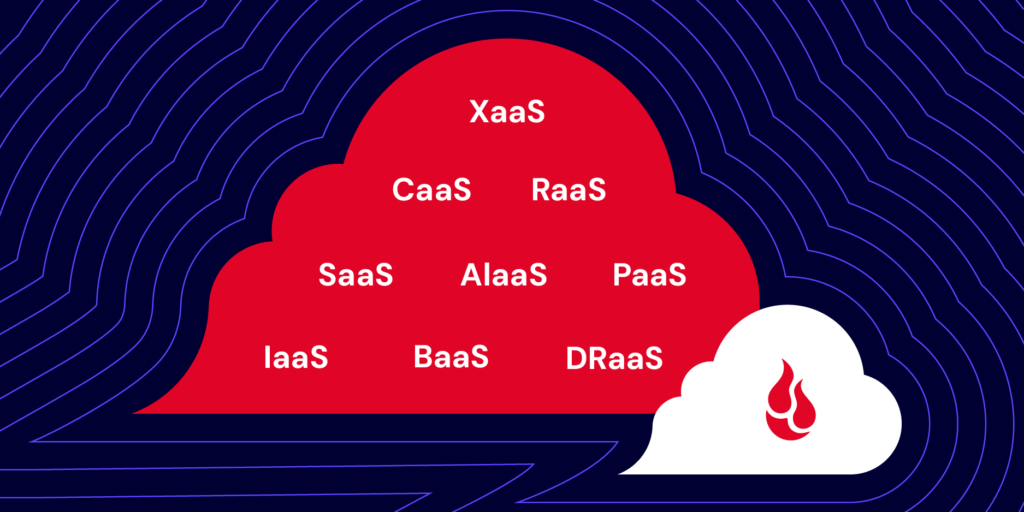
Have you ever felt like you need a dictionary just to understand what tech-savvy folks are talking about? Well, you’re in luck, because we’re about to decode some of the most common jargon of the digital age, one acronym at a time. Welcome to the world of “as a Service” acronyms, where we take the humble alphabet and turn it into a digital buffet.
So, whether you’re SaaS-savvy or PaaS-puzzled, or just someone desperately searching for a little HaaS (Humor as a Service …yeah, we made that one up), you’ve come to the right place. Let’s take a big slurp from this alphabet soup of tech terms.
The One That Started It All: SaaS
SaaS stands for software as a service, and it’s the founding member of the “as a service” nomenclature. (Though, very confusingly, there’s also Sales as a Service—it’s just not shortened to SaaS. Usually.)
Imagine your software as a pizza delivery service. You don’t need to buy all the ingredients, knead the dough, and bake it yourself. Instead, you simply order a slice, and it magically appears on your table (a.k.a. screen). SaaS products are like that, but instead of pizza they serve up everything from messaging to video conferencing to email marketing to …well, really you name it. Which brings us to…
The Kind of Ironic One: XaaS
XaaS stands for, variously, “everything” or “anything” as a service. No one is really sure about the term’s provenance, but it’s a fair guess to say it came into existence when, well, everything started to become a service, probably sometime around the mid-2010s. The thinking is: if it exists in the digital realm, you can probably get it “as a service.”
The Hardware Related Ones: HaaS, IaaS, and PaaS
HaaS (Hardware as a Service): Instead of purchasing hardware yourself, like computers, servers, networking equipment, and other physical infrastructure components, with HaaS, you can lease or rent the equipment for a given period. It would be like renting a pizza kitchen to make your specialty pies specifically for your sister’s wedding or your grandma’s birthday.
IaaS (Infrastructure as a Service): Infrastructure as a service is kind of like hardware as a service, but it comes with some additional goodies thrown in. Instead of renting just the kitchen, you rent the whole restaurant, chair, tables, and servers (no pun intended) included. IaaS delivers virtualized computing resources, like virtual machines, storage (that’s us!), and networking, over the internet.
PaaS (Platform as a Service): Think of PaaS as a step even further than IaaS—you’re not just renting a pizza restaurant, you’re renting a test kitchen where you can develop your award-winning pie. PaaS provides developers the ability to build, manage, and deploy applications with services like development frameworks, databases, and infrastructure management. It’s the ultimate DIY platform for tech enthusiasts.
The Bad One: RaaS
RaaS stands for Ransomware as a Service, and this is one “as a service” variant you don’t want to mess with. Basically, cybercriminals can purchase ransomware just as easily as you would purchase any app on the app store (it’s probably more complicated than that, but you get the general gist). This makes it easy for even the least savvy cybercriminal to get into the ransomware game. Not great.
The Ones That Help With the Last One: BaaS and DRaaS
BaaS (Backup as a Service): Backup as a Service is a cloud-based data protection solution that allows individuals and organizations to back up their data to a remote cloud. (Hey! That’s us too!) Instead of managing on-premises backup infrastructure, users can securely store their data off-site, often on highly redundant and geographically distributed servers.
DRaaS (Disaster Recovery as a Service): DRaaS stands for disaster recovery as a service, and it’s the antidote to RaaS. Of course, you need good backups to begin with, but adding DRaaS allows businesses to ensure specific recovery time objectives (RTOs, FYI) so they can get back up and running in the event they’re attacked by ransomware or there’s a natural disaster at your primary storage location. DRaaS solutions used to be made almost exclusively with the large enterprise in mind, but today, it’s possible to architect a DRaaS solution for your business affordably and easily.
The Analytical One: DaaS
DaaS stands for data as a service, and it’s your data’s personal chauffeur. It fetches the information you need and serves it up on a silver platter. DaaS offers data on-demand, making structured data accessible to users over the internet. It simplifies data sharing and access, often in real-time, without the need for complex data management.
The Development-Focused Ones: CaaS, BaaS (again), and FaaS
CaaS (Containers as a Service): CaaS simplifies the deployment, scaling, and orchestration of containerized applications. It’s the tech version of a literal container ship. The individual containers “ship” individual pieces of software, and a CaaS tool helps carry all of those individual containers. Check out container management software Docker’s logo for a visualization:

BaaS (Backend as a Service): It wouldn’t be the first time an acronym has two meanings. BaaS, in this context, provides a backend infrastructure for mobile and web app developers, offering services like databases, user authentication, and APIs. Imagine your own team of digital butlers tending to the back end of your apps. They handle all the behind-the-scenes stuff, so you can focus on making your app shine.
FaaS (Function as a Service): FaaS is a serverless computing model where developers focus on writing and deploying individual functions or code snippets. These functions run in response to specific events, promoting scalability and efficiency in application development. It’s like having a team of tiny, code-savvy robots doing your bidding.
Go Forth and Abbreviate
Now that you’ve sampled all of the flavors the vast “as a service” world has to offer, we hope you’ve gained a clearer understanding of these sometimes confounding terms. So whether you’re a business professional navigating the cloud or just curious about the tech world, you can wield these acronyms with confidence.
Did we miss any? I’m sure. Let us know in the comments.




